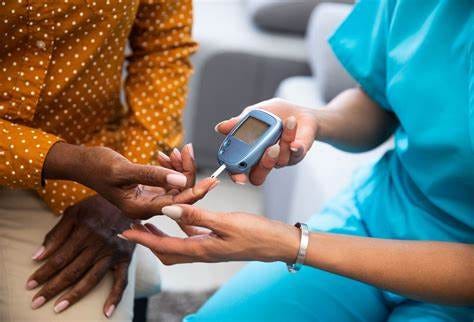Diabetes Mellitus: everything you need to know
Diabetes Mellitus (DM), more commonly known as “sugar” in Pakistan, is one of the most common endocrinological diseases in this region. According to the International Diabetes Federation, approximately 26.7% of Pakistan’s adult population is affected by diabetes, making the number of individuals affected by this condition a whopping 33,000,000. This number is steadily rising with each year. In addition to this, there are a large number of undiagnosed cases present already, therefore, it can safely be said that the incidences of diabetes in Pakistan is much higher than reported.
What is diabetes?
Diabetes mellitus (DM) is a condition in which the body stops digesting carbohydrates and sugars the way it would in a regular human being, leading to persistently higher levels of sugar in the bloodstream, which then has a number of different damaging effects in multiple parts of the human body.
DM results from either lack of the hormone called insulin, or it can occur when your body stops responding to insulin. Based on this, Diabetes can broadly be classified into Type I Diabetes Mellitus, or Type II Diabetes Mellitus.
What is insulin?
Insulin is a hormone produced by the pancreas, primarily, in response to a rise in blood glucose. Whenever the body ingests something sweet, or high in carbohydrates, the pancreas releases insulin which then goes on to control the glucose level in your blood to prevent it from spiking. This is mainly achieved when insulin converts glucose into its storage form called glycogen.
Type 1 Diabetes Mellitus
Type I DM primarily occurs in children and adolescents. The main mechanism behind type I DM is the autoimmune destruction of the insulin producing cells present in your pancreas. Due to this destruction, the pancreas can no longer produce insulin leading to severe glucose intolerance, but high insulin sensitivity.
Type II Diabetes Mellitus
On the other hand, type II DM, the more common type occurs in older adults because their body stops responding to insulin. This means that although the pancreas is doing their job in producing insulin, the body no longer fully recognizes the insulin present. Resultant glucose intolerance is mild to moderate, but insulin sensitivity is low.
Risk Factors associated with this type of diabetes include:
obesity
sedentary lifestyle
diet rich in processed foods and high sugar content
In addition, there is also a strong genetic predisposition for developing type II DM.
What are the symptoms of Diabetes?
Diabetes can be asymptomatic. Patients can also present with excessive thirst, increased appetite, and increased urination.
How is Diabetes diagnosed?
Diagnostic tests include:
Fasting blood glucose
Random blood glucose
HbA1C (glycated hemoglobin)
What are the complications of Diabetes?
Complications include increased risk of atherosclerotic diseases like myocardial infarction (heart attack), stroke, and peripheral vascular disease in which blood supply to the limbs is lost leading to amputations.
It also leads to visual disturbances like cataracts, glaucoma and retinal diseases.
Renal diseases also are more prevalent in diabetic patients, often causing chronic kidney disease.
Patients also experience peripheral neuropathy which means that the nerves in their feet and legs, followed by hands and arms get damaged. This can present with tingling or burning pain, and even numbness with loss of all sensation.
What is the treament?
The goal of the treatment is aimed at good glycemic control i.e keeping the blood glucose level within normal limits.
Patients are encouraged to make lifestyle modifications which consist of a diet low in sugar and regular exercise. They are also encouraged to monitor their blood glucose levels at home using a glucometer and are educated about the complications of diabetes.
In addition, type I diabetics are started on insulin while type II diabetics are given different regimens consisting of oral medications and insulin.





